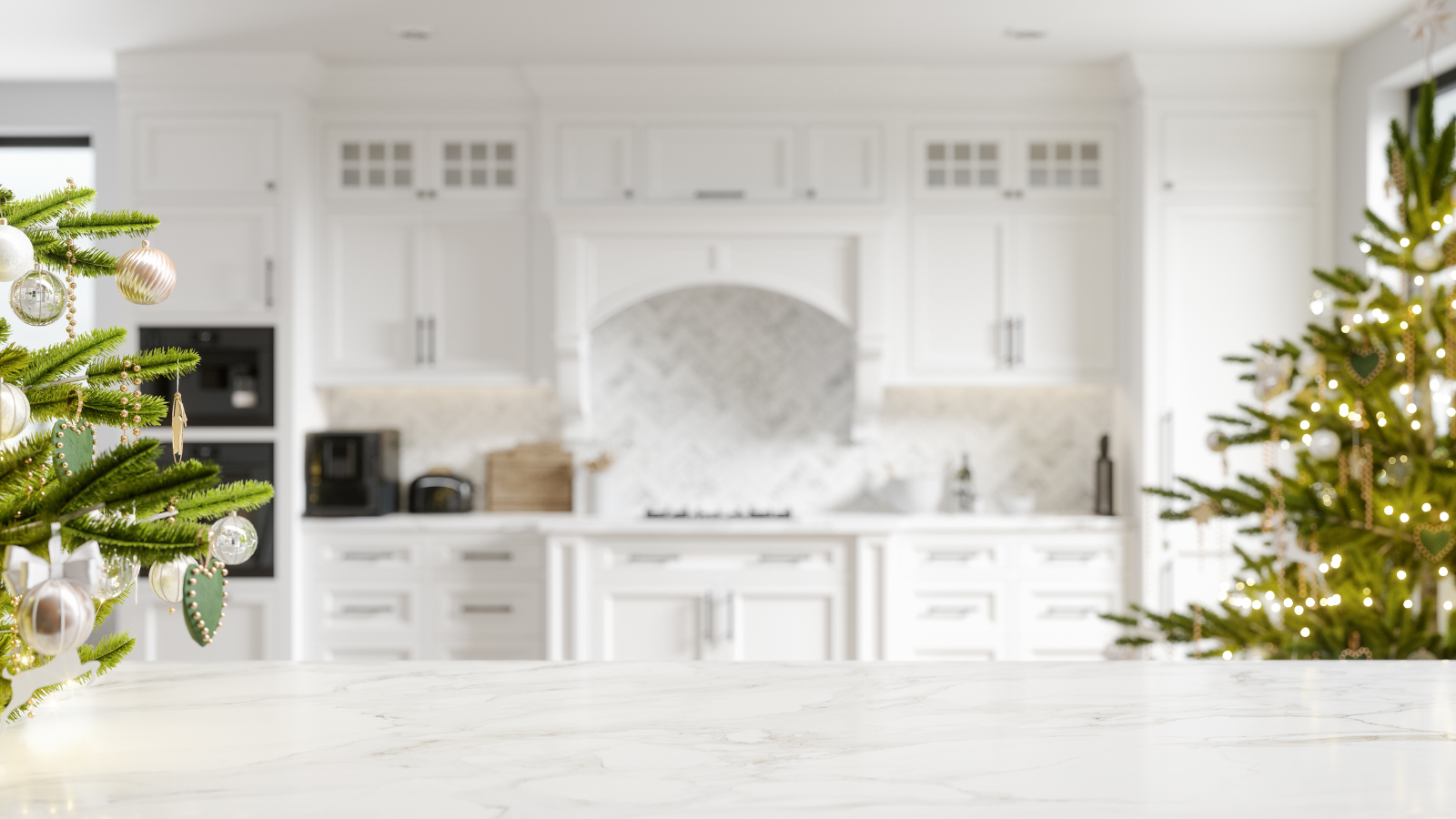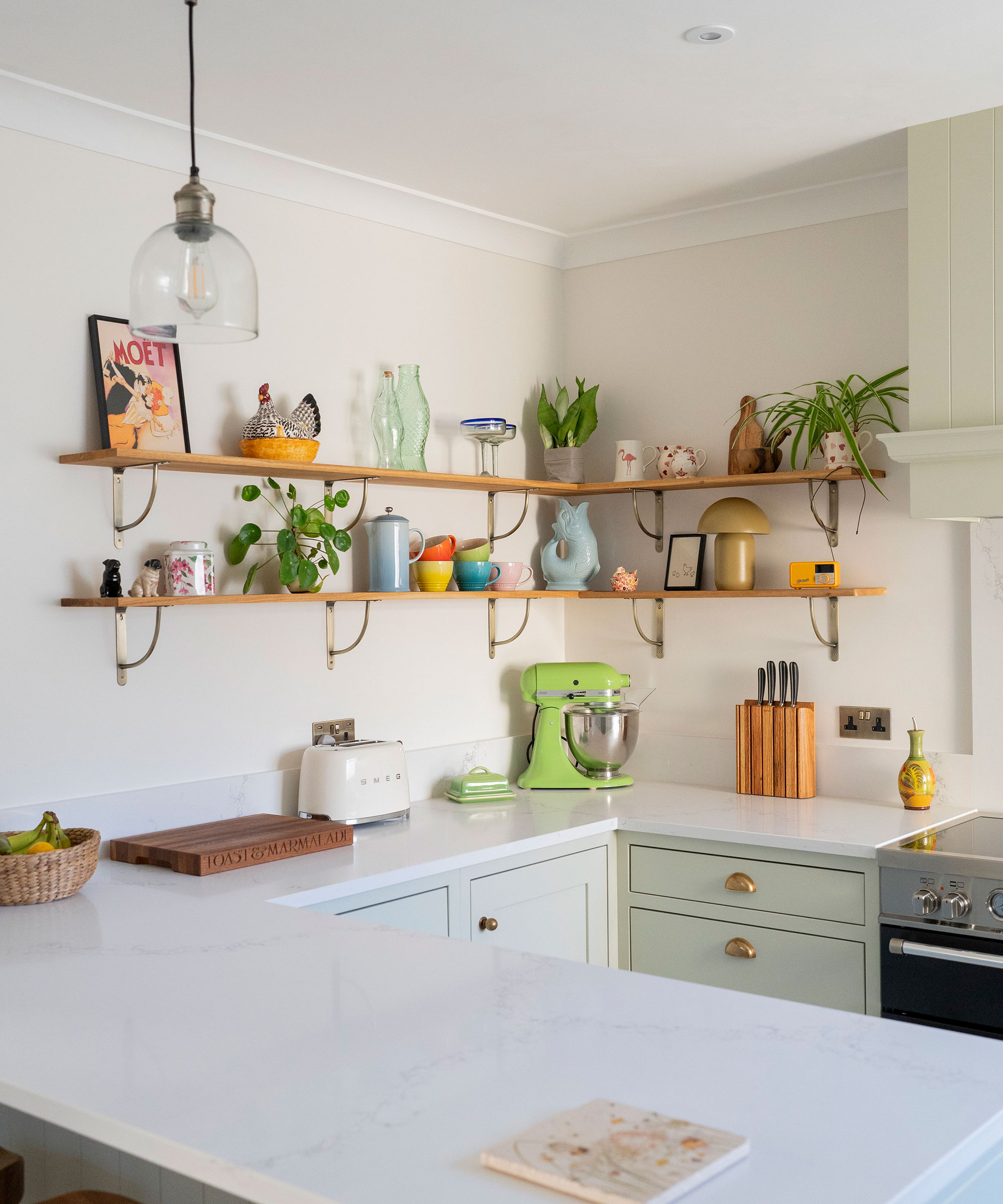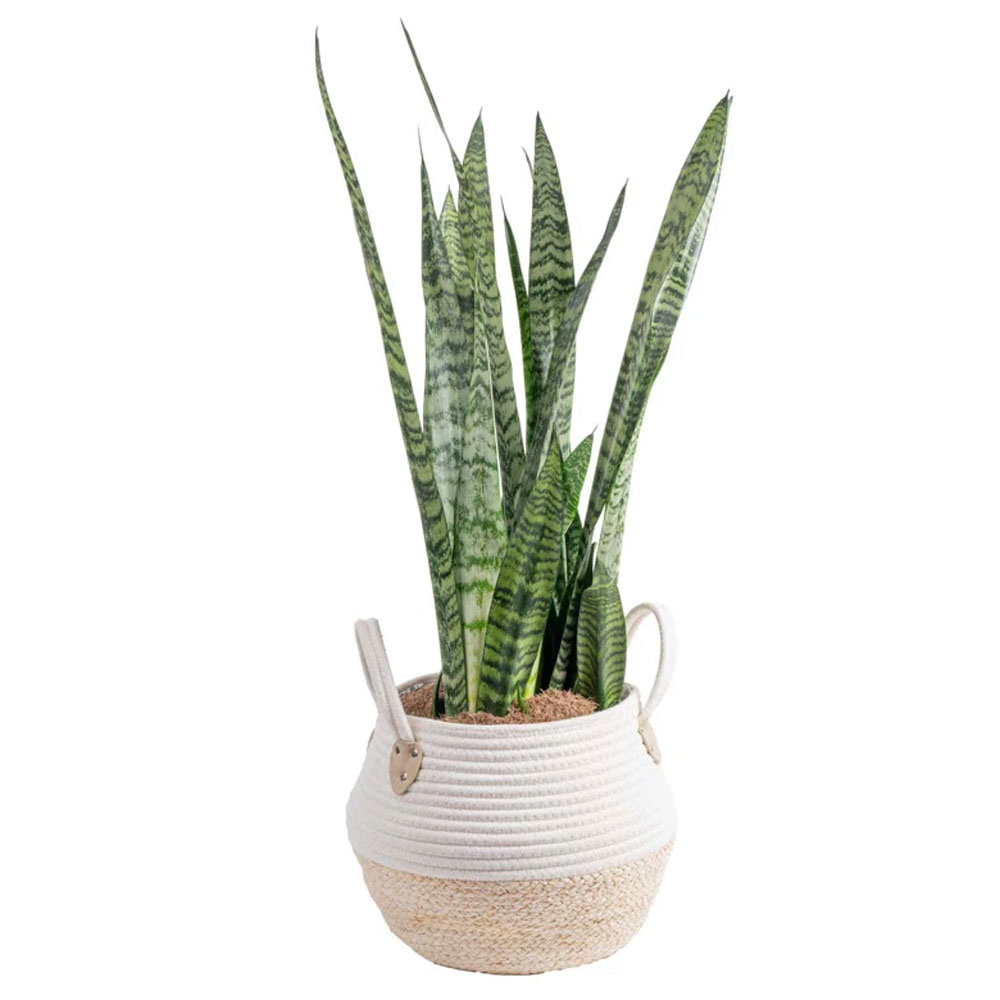
Kitchens can be hot, steamy spaces at the best of times, but during the festive season, when become a hive of cooking and people, the humidity in this room can go through the roof.
Pans of gravy, pots of veg bubbling away and great hunks of meat sizzling in the oven all create heat, moisture and steam. And it doesn't stop there. The kitchen often becomes a sociable hub at this time of year, where everyone wants to congregate, chat and generally hang out – and all those bodies in one place will get those humidity levels rising even more.
With all of this in mind, we asked the experts how to reduce your home's humidity, specifically focusing on the kitchen – not just during the festive season, but once life returns to normal too.
1. Buy the best extractor hood you can afford

It goes without saying that every kitchen needs adequate ventilation if it is going to remain steam, condensation and, ultimately, mold free. You also need to consider ways of dealing with cooking odors. One of the very best ways to ensure this is to invest in the best extractor hood ideas you can.
'A powerful extractor hood that vents outside is essential, but I always recommend looking for one with adjustable fan speeds and a timed shut-off feature,' advises Simon Allen, co-founder of Fountain Filters. 'This allows you to use lower settings for lighter cooking tasks or go full power when the stove is packed. A timed shut-off lets the fan continue working for a few minutes after you finish, clearing out lingering moisture most people forget about.'
Mold remediator and mold and air quality expert at HomeCleanse, Michael Rubino, has a few other tips when it comes to choosing the best extractor hood.
'Ensure your range hood is at least as wide as your cook top, but a little wider is better,' says Michael. 'For busy kitchens, go with a model with a higher cubic feet per minute (CFM) rating, which indicates stronger airflow.'
You also need to ensure you keep your extractor hood in peak condition during this busy time of year and really research how to clean a range hood.
'Be sure to clean and change any filters – and make sure you are venting outside the home, not just recirculating the air,' says Shari McPeek, marketing services manager at Rev-A-Shelf.
Be on the lookout for hoods that are quiet to run too – but, according to Ty Pennington, celebrity home renovation expert and partner with American Standard Heating & Air Conditioning, you shouldn't get too hung up on noise levels.
'If you’re worried about the noise, your guests will be talking, laughing and gathering anyway, so the noise won’t be that bad,' points out Ty.

The stylish curved design of this range hood aside, it also offers three speeds, is simple to control and runs nice and quietly. It will also add something to your overall kitchen lighting scheme as it feature two LED lights.
2. Create a cross-breeze

Some form of natural ventilation is important in the kitchen too and one of the best ways to improve ventilation in your home and keep the kitchen feeling fresh is to create a cross-breeze.
'If possible, create a cross-breeze by opening windows or doors on opposite sides of the kitchen,' advises Michael Rubino. 'This draws fresh air in and pushes moisture-rich air out, helping reduce humidity.'
'This set-up circulates fresh air through the space, quickly removing humid air without needing extra equipment,' agrees Simon Allen. 'It’s an easy fix that many people overlook.'
3. Rethink your kitchen's layout

The way in which your kitchen is arranged could play far more of a role in reducing humidity in the space that you realize. Just a few layout tweaks could make all the difference to your enjoyment of this all-important room.
'Consider rearranging your set-up to keep heat-generating appliances like ovens and dishwashers near windows or external walls to reduce internal heat build-up,' suggests Jon Gilbertson, president and CEO at Chris Heating & Cooling. '
If you have an open plan kitchen diner, one of the worst kitchen layouts is to have heat and noise-generating appliances close to the dining area – you really want these out of the way if you want to eat in comfort.
4. Choose kitchen materials wisely
While it might be obvious that the best countertop materials for cooking should be able to withstand moisture, the materials you use elsewhere within your kitchen can play a huge role in it's humidity levels too.
'Porous materials tend to trap and hold onto moisture, leading to higher humidity inside and creating the perfect environments for microbial growth,' warns Michael Rubino. 'Things to avoid include carpeting, curtains, untreated wood and any paper-based decor.'
Interestingly, there are also some materials that can help reduce moisture levels so would be well worth incorporating into your kitchen design.
'Explore the use of moisture-wicking materials, like cork mats or bamboo trivets, which can help absorb minor surface moisture,' suggests Jon Gilbertson.

This set of four bamboo trivets is perfect for protecting your countertops from burns and stains, plus they feature a really useful non-slip backing to keep them in place. The stand is a nice feature to keep your kitchen organized.

Not only will these cork placements add some nice natural style to your kitchen but they also have multiple uses, as trivets for hot pans or, alternatively, as smart placemats. Each pack contains two round and two square mats.

If you want to keep moisture levels down, choose wooden or metal window coverings over fabric blinds and curtains. These fresh white Venetian blinds would slide perfectly into any interior scheme and are cordless for safety.
5. Get yourself a portable dehumidifier

It is no secret how useful the best dehumidifiers are in whisking away excess moisture and in a busy kitchen they can be a game changer.
'For kitchens prone to high humidity, a portable dehumidifier can work wonders,' agrees Simon Allen. 'Look for one with an auto-shut off function that turns off when the humidity reaches a safe level. Place it near the most active part of the kitchen, like the stove or meal prep area, for best results.'
But where is the best place to put a dehumidifier in the kitchen?
'I recommend placing it on your island if it’s big enough, underneath a table where it’s out of sight and out of the way from your guests, or next to a trash can where your guests won’t gather,' advises Ty Pennington. 'A portable dehumidifier is also beneficial for those with asthma or allergies, since higher humidity levels can contribute to mold growth. I’m a big fan of portable dehumidifiers that you can plug in, but you can also install a whole-home dehumidifier.
'The American Standard Whole Home Dehumidifiers with Optional Ventilation is great because your HVAC system will also run as a ventilation system, helping balance the humidity levels in your whole home.'

This small but mighty dehumidifier is a great deal and will work perfectly for a kitchen without taking up too much space, either. With auto-Off, it'll easily service 500 square feet
6. Maintain kitchen ventilation properly

Some degree of home maintenance is required if you want to ensure the humidity levels in your kitchen remain under control. Any points of ventilation need to be kept clear and clean. In fact, this is one of the best ways to avoid mold growing on your air vents.
'Vents often get clogged with dust and grease, which limits their ability to circulate air properly,' explains Simon Allen. 'I recommend wiping down or vacuuming vents every few months, especially around heavy cooking seasons. Blocked vents won’t pull out moisture efficiently, so keeping them clean is a straightforward way to control hidden humidity.'
Learn how to
7. Mop up spills as soon as they occur
Any unwanted moisture, whether that is in the air or on the floor, needs to be dealt with pronto in the kitchen.
'After cooking, wipe down countertops, stoves and backsplashes where steam and moisture collect,' says Michael Rubino.
You also want to check your kitchen cabinets aren't getting affected by moisture.
'Cabinets near stoves, coffee makers and even refrigerators can trap moisture, creating a prime spot for mold,' warns Simon Allen. 'Open these cabinets briefly after cooking to release trapped humidity, or add silica gel packs to absorb moisture. This prevents mold from developing on food or materials stored inside.'
Avoid making the biggest of all kitchen cabinet cleaning mistakes here though by being sure not to use too much water or cleaning solution as this could damage them.

Make short work cleaning out damp, fusty and humid kitchen cabinets with this highly-effective cleaning spray. Minimal product is needed to get gleaming results meaning no product should get left behind.
8. Monitor humidity levels closely

Not everyone is aware of what the best humidity levels for a home or a kitchen are, but being aware of this and being able to keep an eye on it will really come in handy.
'A hygrometer is a simple and affordable tool for tracking humidity levels in real-time, helping you adjust as necessary,' advises Michael Rubino. 'To get a more accurate reading of the ambient kitchen humidity, place a hygrometer away from cooking appliances but still in the room. If levels go above 50% during peak cooking, dive into some of the above steps to decrease the humidity effectively.
'Install a smart thermostat to maintain ideal relative humidity levels between 30% to 50%,' adds Ty Pennington.

Keep an eye on humidity levels with this hygrometer which will tell you, at a glance, the humidity levels and temperature in the kitchen. The clever device informs you when you need to take action, such as power up your dehumidifier, to make the room feel more comfortable.
9. Pop a few moisture-loving plants around

A few well-chosen plants in the kitchen will not only add to the aesthetics of the space, but they can also help with humidity.
'Plants like Boston ferns and spider plants are worth including as they can absorb moisture in the air,' says Shari McPeek.
Other houseplants that prevent mold and work to reduce moisture levels include Peace Lilies, palms, snake plants and English Ivy.

If you don't usually have much luck keeping houseplants alive then a snake plant could be for you. Low maintenance and with minimal watering requirements, this one also helps with air quality – plus it comes in a stylish woven basket.

Perfect for dotting around all those moisture-laden areas within the home, such as bathrooms, kitchens and laundry rooms, this set of four plants features a range of moisture-loving species that will help with air purification.

Not only are peace lilies beautiful to look at, they also help regulate humidity. This one comes in a 4" pot and will alert you should it need watering as it's leaves begin to point downwards. Even better, this plant blooms year round.
10. Take a whole-house approach
By looking at your house as a whole, there may well be other steps you can take outside of the kitchen to help reduce a home's humidity.
'The less moisture there is in the environment, the easier it will be to manage the humidity in your kitchen,' explains Michael Rubino. 'Some steps to take include fixing leaks ASAP, wiping up pooled water with a microfiber cloth (available at Amazon) keeping windows and doors closed when it’s raining and allowing appliances to dry out when not in use so they don’t harbor water.
'The more you can do to help keep your indoor humidity levels in good shape throughout your home, the easier it will be to keep them on track in your kitchen,' continues Michael. 'Keeping gutters clean and in good working order and ensuring they are installed properly is important, as is making sure there’s adequate insulation.'
Be sure to read up on how to clean gutters from the roof safely before attempting this task.
FAQs
How can I stop condensation in the kitchen?
High-moisture levels teamed with dropping temperatures outside only serve to increase the likelihood of condensation becoming an issue in the kitchen – luckily there are a few extra steps to take that can help.
'Applying a DIY anti-condensation coating on colder surfaces, such as tile backsplashes or countertops, can minimize condensation without relying solely on dehumidifying equipment,' advises Jon Gilbertson.
'Windows in the kitchen can accumulate condensation, which can lead to signs of mold in your home or mildew build-up,' adds Michael Rubino. 'Opt for window treatments that resist moisture and can be easily cleaned. Also, ensure they’re installed properly and the sealing is in good shape.

Ensure your kitchen windows are not letting in moisture and leaking heat with a good sealant such as this. It promises not to crack or shrink and can be applied to a range of surfaces including wood and PVC.
Why do humidity levels matter in the kitchen?
Condensation aside, all of this might have left you asking what humidity should my house be in winter and why is getting rid of humidity in the kitchen such a big deal?
'When the humidity is too high, it can cause microbial growth, poor indoor air quality and structural issues in the building,' explains Michael Rubino. 'Mold can grow at a relative humidity level of 60%. Keeping that level below this threshold can ensure that fungus doesn’t turn your home into a toxic hazard zone.
'However, you also don’t want it to be too dry indoors, which can lead to adverse health reactions and structural issues like wood separation.'
Meet the experts
Now that you have your humidity sorted, it is time to have some fun with kitchen Christmas decor ideas to ensure your entertaining space looks the part.







